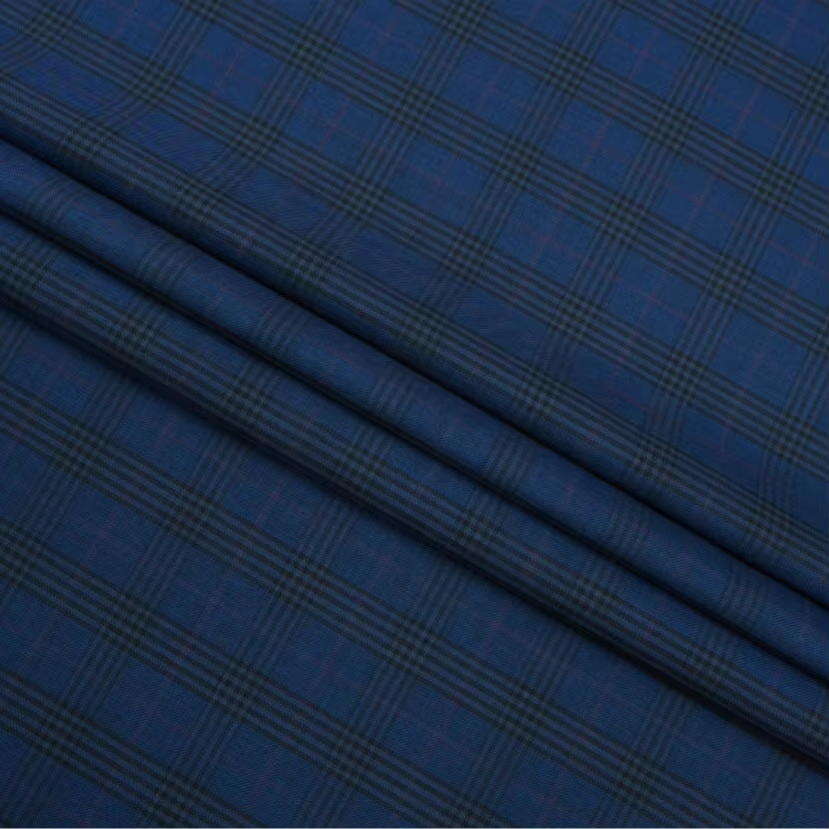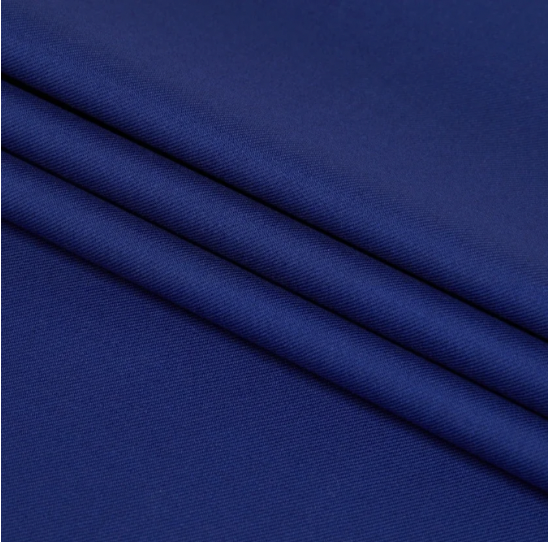Yarasellikli Kumaş Nedir?
Tanım ve Temel Bileşenler
Wool Karışım doğal yünün en iyi özelliklerini, polyester gibi sentetik malzemeler ya da pamuk ve akrilik gibi daha doğal elyaflarla bir araya getirir. Karışımların çoğu yaklaşık %30 ila %65 oranında yün içerir, ancak bazı ürünler hedeflenen amaca göre bu oranın üzerine çıkabilir veya altına düşebilir. Bu karışım sayesinde farklı dokular, aşınmaya karşı direnç seviyeleri ve belirli amaçlara daha uygun işlevsel özellikler elde edilebilir. Örneğin, sıcak ama hafif bir şey arayan kişi için bir karışım uygunken, spor kıyafetleri tamamen farklı bir formülasyon gerektirebilir. Bu kumaşların içeriğini bilmek önemlidir çünkü bu durum bizi ne kadar sıcak tuttuğunu, çekildikten sonra eski haline geri döner mi yoksa şekil bozukluğuna uğrar mı ve nihayetinde düzenli kullanımda ne kadar rahat hissettirdiğini değiştirir.
Tarihi Önemi Wool Karışım
Zamanla kumaş ve moda sektöründe oyunu kazananlar yün karışımları oldu. Bu karışımlar, şirketlerin yünü diğer liflerle birleştirmesine olanak tanıyan yeni üretim tekniklerinin 1900'lerin başında yaygınlaşmasıyla popülerlik kazanmaya başladı. İnsanlar farklı hava koşullarında kullanılabilen giysiler istiyordu, bu yüzden bu yenilikler önemli bir ihtiyacı karşıladı. Bu dönemde teknoloji ilerledikçe üreticiler, kaliteyi yüksek tutarken daha düşük maliyetlerle kumaş üretebildiler. Dayanıklılık faktörü de oldukça önemliydi. Günümüzde yün karışımları her yerde çünkü gün içinde değişen sıcaklıklara rağmen rahat kullanım sunarlar. Hem şıklığından ödün vermeden hem de her mevsime uygun özellikleriyle dünya çapında gardıroplarda vazgeçilmez bir hal aldılar.
Ana Bileşenler: Koyun Yünü ve Ortak Lifler
Yün, çoğu yün karışımlı kumaşta hâlâ başlıca bileşen olmaya devam ediyor; insanların doğanın sunduğu şekilde sıcak kalmasını sağlarken, aynı zamanda yıpranmalara karşı esnekliğini koruyor. Üstelik teri de oldukça iyi şekilde emebiliyor; bu özelliğiyle aslında giymek istediğimiz kıyafetler için harika bir malzeme yapıyor. Üreticiler, polyester, pamuk veya akrilik gibi diğer lifleri kattığında, aslında kumaşa ekstra özellikler kazandırıyorlar. Polyester, yıkamadan sonra uzun süre dayanıklılık ve düzgün görünümlü olma özelliğini korur; pamuk, fazla ısınmamamız için hava dolaşımını kolaylaştırır; akrilik ise maliyeti yüksek olmadan ekstra yumuşaklık katar. Her malzemenin neler getirdiğini bilmek, alışveriş yapan kişilerin günlük kullanım için konforlu, özel günler için şık ya da önümüzdeki hava koşullarına karşı sadece işlevsel olan karışımları kişisel olarak en iyi şekilde seçmelerine yardımcı olur.
Kazak Kumaşlarının Ana Avantajları
Geliştirilmiş Dayanıklılık ve Uzun Ömürlülük
İnsanlar, yün karışımlı kumaşların diğer malzemeler kadar çabuk aşınmadığı için sever. Üreticiler bazı sentetik lifleri karıştırdığında kumaşın dayanıklılığı artar ve tekrarlanan kullanımlardan sonra dağılması önlenir. Bazı araştırmalar, karışık yünlerin, normal yün ürünlerine kıyasla %20'ye varan daha uzun süre kullanıldığını göstermektedir. Bu, bu tür karışımlardan üretilen giysilerin ve ev eşyalarının uzun süre daha iyi görünmesi ve düzgün çalışması anlamına gelir. Dayanıklı ürünler isteyen ev sahipleri ve alışveriş yapanlar için yün karışımları, dayanıklılığı ve makul fiyatlarla bir araya gelmesi nedeniyle özellikle cazip bir seçenek olur; harcanan her kuruşun değerini gösterir.
Geliştirilmiş Nefes Alma ve İstismal Atışı
Yün ile farklı türdeki liflerin karıştırılması aslında kumaşların daha iyi nefes almasına yardımcı olur ve bu da üzerimize giydiğimizde vücudumuzun çevresinde hava hareketini korumamıza yardımcı olur. Yün doğal olarak teri deriden uzaklaştırır, bu yüzden dışarı sıcak ya da soğuk olduğunda bizim için konforlu bir sıcaklıkta kalır. Yünü pamuk veya polyester gibi başka bir şey ile birleştirin ve aniden bu kıyafetler terimizi deriden uzaklaştırmak için daha fazla çalışmaya başlar. Bu yüzden birçok spor giyim markası ve günlük giyim koleksiyonları son zamanlarda bu tür karışımları kullanmaya başladı. İnsanlar, gün boyunca terli ya da rahatsız edici hissetmeden egzersizler sırasında daha serin, soğuk hava içinde ise daha sıcak kalduklarını fark ediyorlar.
Sadece Ketenle Mükkayese Fiyat Etkinliği
Kıvam ve uygun fiyatın buluştuğu noktada olan yün karışımlar, tamamen yün ürünlerden çok daha uygun fiyatlar sunar. Bu nedenle çoğu insan için daha ulaşılabilir bir seçenek olur. İlginç olan, bütçeye dost olmalarına rağmen yün karışımların dokusu ve performans açısından yün ürünlerle neredeyse aynı seviyede kalabilmeleridir. Tüketicilerin çoğu, karışık kumaşların neredeyse saf yünle aynı deneyimi yaşattığını ve maliyet açısından çok daha avantajlı olduğunu belirtmektedir. Akıllı harcama yapmak isteyen ama yine de konforlu ve şık bir şey arayanlar için yün karışımları hem maliyet hem de pratiklik açısından oldukça mantıklıdır.
Kıvrım Direnci ve Kolay Bakım
Yün karışımı kumaşların başka bir büyük avantajı da buruşmaya karşı dayanıklı olmalarıdır. Bu da insanların onları ütülemek için fazla zaman harcamasına gerek kalmadığı anlamına gelir. Bu özellik, yoğun programları olan ya da sürekli hareket halinde olan kişiler için oldukça kullanışlıdır; çünkü giysiler valize sıkıştırıldığında ya da çamaşır sepetine atıldığında bile düzgün görünmeye devam eder. Günlük yaşamda giyilmeye uygun bu malzemelerin düşük bakım gereksinimi, her gün değerli dakikalar kazandırır. İşte bu yüzden, hem şık hem de çağdaş yaşamın gerekliliklerine karşı sürekli bakım gerektirmeden dayanabilecek bir şey arayan birçok profesyonel, yün karışımlarına yönelir.
Yaygın Yün Karışımları ve Özellikleri
Keten-Poliester: Dayanım ve Uygun Fiyat
Keten ile karıştırılmış yün, kendine hayran bırakan yünün en iyi özelliklerini polyesterin sunduğu dayanıklılıkla birleştirdiği için dikkat çekiyor. Yün, hepimizin tanıdığı ve sevdiği doğal sıcaklığı sağlarken, polyester maliyeti yüksek olmadan kumaşa sağlam bir yapı kazandırıyor. Bu karışım kumaşlar aynı zamanda formunu koruma konusunda oldukça başarılılar. Kolay kolay büzüşmüyor ya da buruşmuyorlar, bu yüzden günlük giysilerden fabrika ve atölyeler için üretilen ürünlere kadar geniş bir yelpazede kullanılıyorlar. Moda evleri de bu iyi görünüm ve uzun ömürlü yapının ortaya koyduğu avantajları fark etti. Artık tasarımcılar, aşırı maliyetli olmadan modaya uygun ve aynı zamanda kullanım sırasında oluşan yıpranmaya karşı dayanıklı giysiler tasarlayabiliyor.
Keten-Pamuk: Hafif Rahatlık Tüm Mevsimler İçin
Yün ve pamuk bir araya geldiğinde, her mevsim rahatça kullanılabilen, ancak yine de hafif olan özel bir şey yaratırlar. Pamuk, kumaşlara karakteristik yumuşak dokusunu verir ve hava dolaşımına izin verirken, yün ise bahar veya sonbahar günlerinde hava sıcaklığının düştüğü durumlarda ekstra izolasyon sağlar. Bu karışım, her gün giyilen kıyafetler için, örneğin kazaklar ve sweatshirt'ler için, ayrıca çarşaflar ve battaniyeler gibi ev tekstilleri için tercih edilmektedir çünkü cilde dokunduğu zaman gerçekten rahat hissettirir. Yün-pamuk karışımı giysiler giymiş herkes, neden insanlar tekrar tekrar bu kumaşa dönmektedir anlayacaktır – çünkü esen bir rüzgar olduğunda bile sıcacık kalmasını sağlar ama aynı zamanda fazla ısıtmaz.
İpek-Koyun Yünü: Lüks Doku ve Termal Düzenleme
Lüks kumaşlar söz konusu olduğunda, yün ve ipekten oluşan kombinasyondan iyisi yoktur. Bu malzemeler bir araya geldiğinde, vücut sıcaklığını korurken aynı zamanda zengin bir his uyandırır. Moda evleri, gece elbiseleri ve üst düzey yatak takımları koleksiyonlarında hem işlevsel hem de şık olmaları sebebiyle bu kumaşları çok severler. İpek, hepimizin arzuladığı yumuşaklığı ve kayganlığı katarak dikkat çekerken, yün ise sıcaklık değişimlerine karşı o kadar iyi bir şekilde başa çıkabilir ki kimse fark etmez bile. Tasarımcılar, bu kumaşların hem giyilirken hem de yıkanırken kendilerini asla mahvetmeyeceğini bildikleri için karmaşık desenlerle yaratıcı olabilirler. Bu karışımlı kumaşlara yatırım yapan insanlar genellikle onlara tekrar tekrar yönelirler; sadece görünümleri yüzünden değil, aynı zamanda daha ucuz alternatiflerden çok daha iyi performans gösterdikleri için.
Yün-Akrilik: Nemli ve Sıvışıklığa Direnç
Akrilik, yünle karıştırıldığında elde edilen kumaşlar, cilde çok yumuşak geldikleri halde, büzülme ve solma sorunlarına karşı yine de oldukça dayanıklı olur. Bu malzemeler özellikle yürüyüş ya da kamp yaparken sıcak ama dayanıklı bir şeye ihtiyaç duyan insanların giydiği kazaklarda, bere ve hırkalarda sıklıkla görülür. Fiyat olarak da bütçeyi düşünen kişiler için saf yün ürünlerle kıyaslandığında daha uygun bir seçenek sunar. Ayrıca yıkama talimatları da pek karmaşık değildir ve bu da yoğun hayatlar süren müşteriler için bakım gerektirmeyen ancak yine de uzun ömürlü giysiler arayışındakilere bir diğer avantaj sunar. Kısacası bu kombinasyon, insanların günlük giyimlerinden beklediği üç temel kriteri de karşılıyor.
Yün-Nilon: Esneklik ve Sürüklenmeye Direnç
Yün ile naylon karıştırıldığında, esnekliğini korurken yıpranmaya karşı oldukça dayanıklı bir kumaş elde ederiz. Naylon, sürtünmeye karşı dayanıklılık ve güzel bir esneklik özelliği katar; yün ise hava almayan bir his uyandırmadan doğal olarak sıcak tutma özelliğini sunar. Bu kombinasyon, yoğun antrenmanlar sırasında ya da zorlu arazilerde uzun yürüyüşler yaparken dayanıklı ekipmanlara ihtiyaç duyan kişiler için mükemmel çalışır. Birçok koşucu, leggings'lerinde bu malzemeleri tercih eder ve yürüyüşcüler, uzun süreli sert hava koşullarına karşı kendileri için vazgeçilmez bulurlar.
Kuz-Bamboo: Çevre dostu ve antibakteriyel
İnsanlar, yünle karıştırılmış bambu ipliğine hem dünyaya iyi geldiği hem de doğal antibakteriyel özelliklere sahip olması nedeniyle ilgi gösteriyor. Hızlı büyüyen ve az suya ihtiyaç duyan bambu lifleri, geleneksel yünle birleştirildiğinde hem çevreye zarar vermeyen hem de cilde dokunuşunda çok iyi hissettiren kumaşlar elde ediliyor. Bu karışımların özel kılan özelliği, vücut sıcaklığındaki düzenleyici etkisidir. Böylece çevreci giysiler tercih eden kişiler dahi giysilerinden hem işlev hem de konfor açısından ihtiyaçlarını rahatlıkla karşılayabiliyor. Son zamanlarda artan sayıda alıcı, bu tür kumaş kombinasyonlarına yönelerek sürdürülebilir yaşam bilincinin tüketiciler arasında gün geçtikçe artmakta olduğunu gösteriyor.
Uygun Koyun Postu Karışım Kumaşı Nasıl Seçilir
Sezonel İhtiyaçları Değerlendirme: Kış ve Yaz Karışımları
Hangi mevsimlerin ne getirdiğini bilmek, doğru yün karışımı kumaşı seçmeyi kolaylaştırır. Kış kumaşlarında genellikle daha fazla yün bulunur çünkü bizleri sıcak tutmaları gerekir. Yün doğal olarak soğuktan koruyucu özellik taşır ve bu karışımları kış giysileri için ideal hale getirir. Ancak yaz karışımları farklıdır. Daha hafiftirler ve havanın dolaşımına daha fazla izin verirler. Birçok yaz kumaşında pamuk veya nefes alabilen diğer malzemeler yer alır çünkü sıcak günlerde insanların konforlu kalmasını sağlarlar. Pamuk, sıcak günlerde herkesin memnuniyetle karşıladığı ekstra hava akışını sağlar. Alışveriş yaparken yaşadığınız yeri ve çoğunlukla yaptığınız aktiviteleri düşünmek önemlidir. Soğuk bölgelerde dışarıda zaman geçiren kişiler daha kalın yün karışımları tercih ederken, sıcak iklimlerde ofis çalışanları daha hafif seçenekleri yeğleyebilir. Kumaş seçimini yıl boyunca gerçek ihtiyaçlarınıza göre yapmak, hangi mevsim olursa olsun konforunuzu sağlamak açısından büyük bir fark yaratır.
GSM ve Dokuma: Ağırlık ve Dökümü Anlama
Gramaj (GSM) ölçümü, kumaşın kalınlığı hakkında önemli bilgiler verir ve bu da kumaşın ne kadar ağır hissettirdiğini ve vücutta nasıl durduğunu etkiler. Giysi alışverişinde, GSM değerinin ne anlama geldiğini bilmek, farklı ihtiyaçlara en iyi şekilde uygun kumaşları seçmemizi sağladığı için oldukça önemlidir. GSM değeri yüksek olan kumaşlar genellikle daha sıcak tutar ve formunu daha iyi korurken, düşük GSM değerine sahip olanlar daha hafif ve cilde daha fazla hareket kabiliyeti sunar. İpliklerin birbirine nasıl dokunduğu da önemli bir faktördür. Twill dokuma, genellikle pantolonlarda veya iş elbiselerinde kullanılan daha güçlü ve dayanıklı kumaşlar oluştururken, düz dokuma ise gömlekler veya hafif yazlık giysiler için daha pürüzsüz bir yüzey sağlar. Bu temel kavramlarla ilgili bilgi sahibi olmak, alışveriş yapan kişilerin kış için sıcak tutan ya da bahar günleri için nefes alabilen ürünler seçmesine yardımcı olur.

Isıya Karşı Önceliklendirme vs. Nefes Alma
Yün karışımları için sıcaklık ve nefes alabilme arasında seçim yaparken, bu karar, hangi kumaşın seçileceğine dair büyük bir fark yaratır. Soğuk bölgelerde yaşayan insanlar, daha çok ısı tutma özelliğine sahip oldukları için yüksek yün içeriğine sahip kumaşları tercih etme eğilimindedir ve bu da onları soğuk hava altında sıcak ve rahat tutar. Bunun aksine pamuk veya bambu gibi daha hafif malzemelerle yapılan karışımlar, hava dolaşımına izin verdikleri ve terin daha hızlı buharlaşmasına yardımcı oldukları için daha sıcak hava koşullarında mükemmel sonuç verir. Bu tür avantajların ve dezavantajların farkında olan müşteriler, sadece rafta iyi görünen bir şeyi değil, kendi ihtiyaçlarına uygun bir ürün seçebilirler. Kışın soğuk havasına ya da yazın nemli havasına rağmen, doğru şeyi arayan birisi satın alımından çok daha memnun kalacaktır.
Küçülme Direncini ve Bakım Gereksinimlerini Değerlendirme
Düzenli olarak yıkanan günlük giyim ürünlerinde kullanılacak yün karışımlarını seçerken, ne kadar büzülmeden dayanıklı olduklarını kontrol etmek oldukça önemli hale gelir. Bakım etiketleri, kıyafetlerin görünüşünü tüm bu yıkamalardan sonra da koruyabilmek için net talimatlar sunmalıdır; böylece insanların kazakları ya da diğer giysileri büzülüp hasar görmemiş olur. Bu tür kolay bakım etiketleri, iş, aile yaşamı ve bunlar arasında kalan her şeyi yönetmeye çalışan ve sürekli bakım gerektirmeyen kumaşlar isteyen insanlar için özellikle yararlıdır. Farklı yün karışımlarının ne tür bakım gerektirdiğini bilmek, alışveriş yapan kişilere evde rahatlıkla bakımını yapabilecekleri bir ürün seçmelerinde yardımcı olur. Bu durum hem pratik hem de ekonomik açıdan mantıklıdır çünkü doğru şekilde bakımlı yün çok daha uzun ömürlü olur ve yıpranma belirtileri de çok daha geç ortaya çıkar.
Karışım Kullanım Durumlarına Uygun Hale Getirme: Resmi vs. Günlük
Karma yün, kullanım amacına göre değişen pek çok farklı kombinasyonda gelir. Resmi giysiler genellikle etkinliklerde veya toplantılarda insanların istemiş olduğu gösterişli görünümü elde etmek için ipek karışımı veya çok ince yünlerle tercih edilir. Buna karşılık, günlük kullanımda daha dayanıklı ve aynı zamanda cilde konforlu hissettiren yün-akrilik karışımları tercih edilir. Markalar, farklı dokumaların yaşam tarzına ve çeşitli durumlara nasıl uyduğunu doğru şekilde açıkladığında, müşteriler satın aldıkları ürünlere daha fazla memnuniyet duyar ve iade yaparlar. Doğru tercih edildiğinde alışveriş yapanlar, akşam yemeğine gitmekten şehir içinde işlerini halletmeye kadar giysilerinin beklendiği gibi performans göstermesini sağlar.
Karma Yün için Bakım ve Temizlik İpuçları
Küçülmesini Önlemek İçin Yıkama Talimatları
Yün karışımlarını doğru şekilde yıkamayı öğrenmek, ürünün bozulmadan uzun süre kullanılabilmesi açısından oldukça önemlidir. Birçok kişi, makinelerindeki hassas yıkama programıyla birlikte soğuk suyun yıkama sırasında zarar veren liflerin dolaşmasını engelleyecek şekilde koruduğunu fark eder. Ayrıca, yün ürünler için özel olarak üretilen deterjanları da unutmamak gerekir. Bu deterjanlar, doğal yağları uzaklaştıran normal çamaşır sabununa kıyasla malzemeyi daha iyi korur. İnsanlar bu temel bakım ipuçlarını öğrendiğinde, sevdiği kazaklar ve kabanlar birkaç yıkamada dağılacağından endişe etmeden uzun süre kullanılabildiği için uzun vadede para tasarrufu sağlarlar. Üstelik kim sezonlarca aynı kıyafetlerin hala güzel görünmesini sevmez ki?
Kumaş Integritetini Koruma Depolama Çözümleri
Keten kıyafetlerin nasıl saklandığı, onların görünümlerini korumak açısından oldukça önemlidir. Çoğu kişi bunun farkında değildir ama bu kıyafetleri nemli yerlerde saklamak, kelebek zararına ve nem birikiminden kaynaklanan çeşitli hasarlara yol açabilir. Birçok kişinin göz ardı ettiği basit bir hile vardır: plastik örtüler yerine pamuklu kıyafet örtüleri kullanmak. Bunlar hava dolaşımına izin vererek kumaşın orijinal şeklini ve dokusunu korumaya yardımcı olur. Bir kişi, doğru depolama ipuçlarını uygulamaya zaman ayırırsa, keten eşyaları genellikle daha uzun süre dayanır, yumuşak hissini kaybetmez ve aylarca bekledikten sonra çarpık hale gelmez.
Yün Liflerindeki Küpçükleri Onarma ve Dokuyu Koruma
Yün karışımları genellikle tüylenmeye (pilling) oldukça açık olup, bu da kıyafetlerinin uzun süre iyi görünmesini isteyen herkes için sinir bozucu olabilir. İyi haber mi? Bu sorunla başa çıkmak ve kumaşların taze görünmesini sağlamak için bazı yöntemler var. Yüzeydeki bu sinir bozucu tüy topaklarını gidermede bir kumaş traş makinesi harikalar yaratır. Etkilenen alanların üzerinden geçirin ve onların kayboluşunu izleyin. Günlük bakım için kumaşı tek bir yönde hafifçe fırçalamak, yeni tüylenmeleri önlemeye yardımcı olurken, cilde temas halindeyken pürüzsüz bir his uyandırır. İnsanlar yün ürünlerini nasıl onaracaklarını ve bakımını yapacaklarını bildiğinde, kıyafetlerini daha uzun süre kullanarak yenilerini alma ihtiyacını geciktirirler. Bu da zamanla kaliteli yün karışımlarına harcanan paranın daha iyi bir şekilde değerlendirilmesi anlamına gelir.
Kat Çıkartmak İçin Ütüleme ve Buharlama
Keten karışımları iyi görünmeye ve doğru çalışmasına devam edebilmeleri için özel bakım gerektirir. Ütüleme sırasında, erimelerini ya da liflerin zarar görmesini önlemek amacıyla sıcaklığı normalin altında tutun. Birçok kişi, kırışıkları giderirken doğrudan ısı uygulamadan kumaşın yapısının bozulmasını engelleyen buharın da mucizeler yarattığını belirtiyor. Bu basit adımlar, keten kıyafetlerin birkaç kez giyildikten sonra bağış kutusuna gitmek yerine yıllarca şık görünmesini sağlamak isteyen herkes için büyük fark yaratır.
SSS
Kazı kumaşının tipik bileşimi nedir?
Kazı kumaşı genellikle %30-%70 kazı içerir, geriye kalan lifler poliestır, pamuk veya akriliktir.
Kazı karışımları kumaş dayanıklılığına nasıl etki eder?
Kazı karışımları, sentetik lifler sayesinde saf kaza göre 20-30% daha uzun sürer ve dayanıklılığı artırır.
Saf kaza kıyasla, kaza karışım kumaşları maliyet açısından verimli midir?
Evet, kaza karışım kumaşları genellikle kalite ve stil sunarken saf kaza daha uygun fiyattadır.
Farklı türlerde kaza karışımlarının yaygın kullanımları nelerdir?
Kullanım alanları karışım türüne göre değişir—örneğin yün-poliester giysilerde dayanıklılık sağlarken, yün-pamuk tüm mevsimlerde çok yönlü kullanım sunar ve yün-ipek lüks bir dokunuş sağlar.
Kaza karışım kumaşları hasar görmesini önlemek için nasıl bakılmalıdır?
Ana bakım ipuçları soğuk suyla yıkama, kurutma alanlarında depolama, yün temizleyicilerinin piliçlemesi için kullanımı ve hafif ütüleme/buharlamadır.
İçindekiler
- Yarasellikli Kumaş Nedir?
- Kazak Kumaşlarının Ana Avantajları
- Yaygın Yün Karışımları ve Özellikleri
- Uygun Koyun Postu Karışım Kumaşı Nasıl Seçilir
- Karma Yün için Bakım ve Temizlik İpuçları
-
SSS
- Kazı kumaşının tipik bileşimi nedir?
- Kazı karışımları kumaş dayanıklılığına nasıl etki eder?
- Saf kaza kıyasla, kaza karışım kumaşları maliyet açısından verimli midir?
- Farklı türlerde kaza karışımlarının yaygın kullanımları nelerdir?
- Kaza karışım kumaşları hasar görmesini önlemek için nasıl bakılmalıdır?

